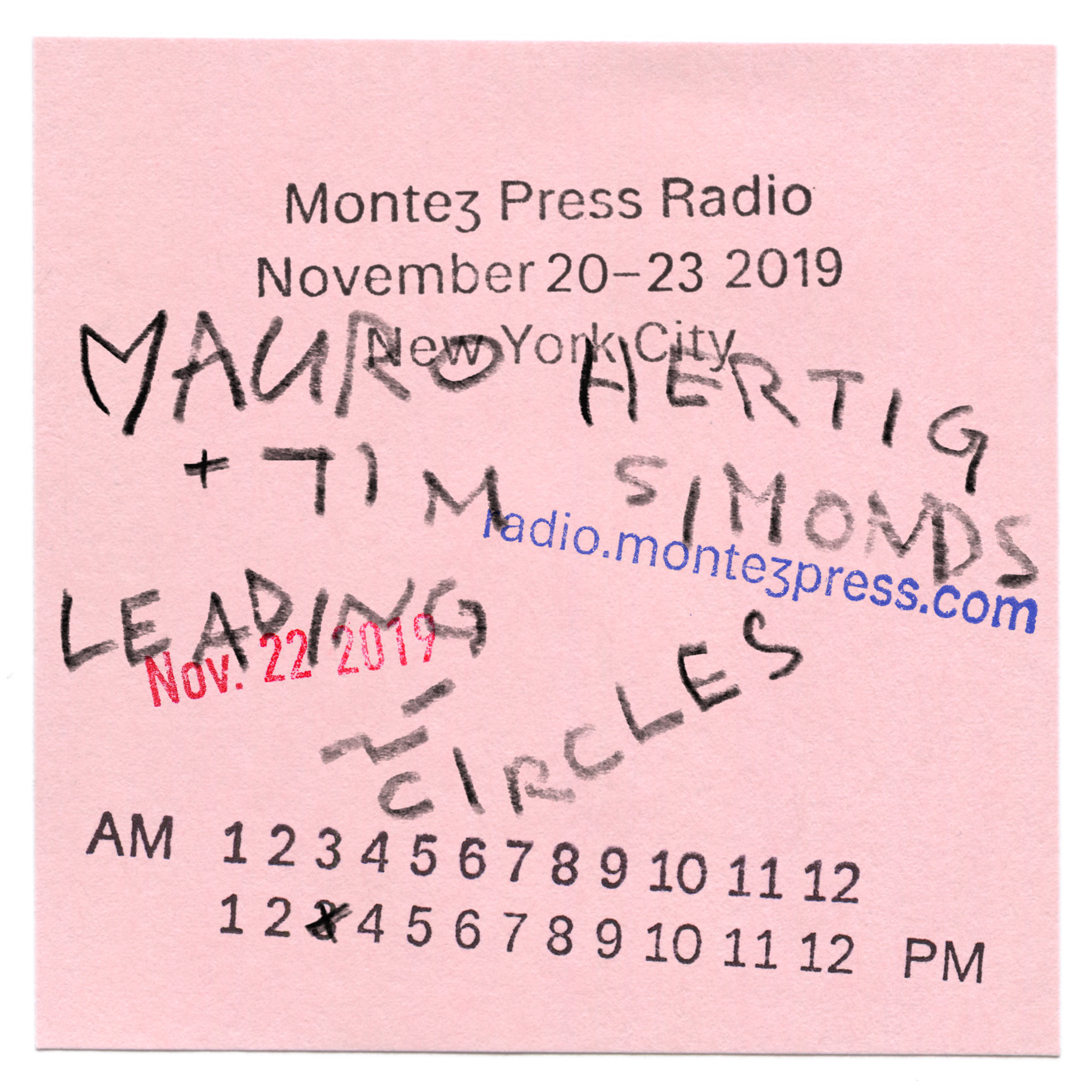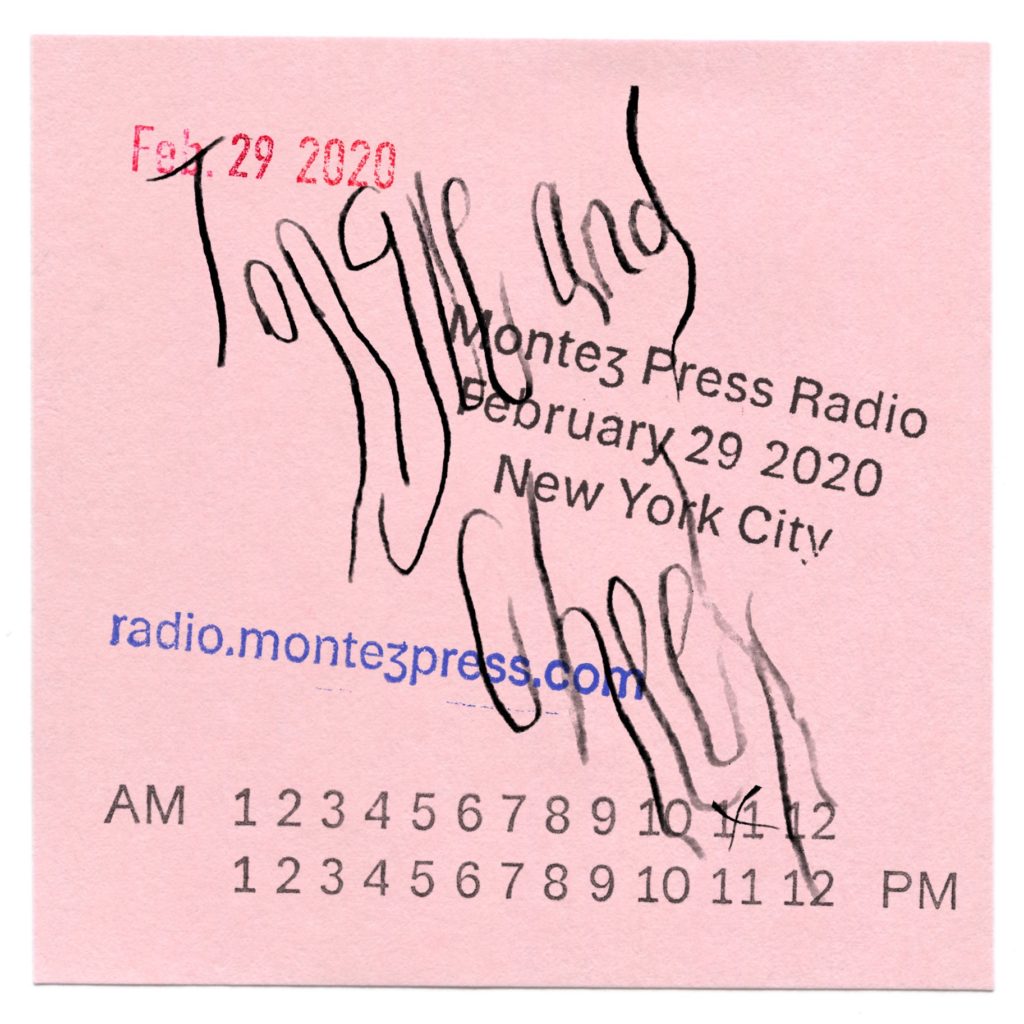Now,
There are two voices, and only two voices all the time.
Either voice might be an instrument’s sound, a guitar or a keyboard, in the room, here, now.
They speak to each other. Speak alone and hear one and other. Speak along while listening to each other. Or speak without listening to each other. No matter, hear now, these two voices, no matter what they do, are tethered to one and other.
There are two voices, and only two voices all the time.
But these too voices are not limited to our voices and the sounds of the instruments around us here and now. Either voice might be something from farther away, a record of something not now.
These conversations, are / here, now, / not many voices.
Cacophony is not multiple voices
Polyphony is not multiple voices
Cacophony is one voice
Polyphony is one voice
One of only two voices, and only two voices all the time.
One voice considers the other voice.
If the voice makes a sound, it means it has met another voice.
It has already exchanged with the other voice.
If I say eeeeeeeeeyeeeeee or say say it means Mauro has said this.
He does not control me, he has only opened his mouth and remained silent to let my air out.
He speaks with my vocal chords, and I speak with his.
Every voice speaks using the other voice’s chords.
…
Now, a singing lesson…
Leading and Circles was a radio broadcast with the musician and composer, Mauro Hertig. An exchange of exercises for reading and singing. Two voices, a guitar and a keyboard are put in a chain of influences, following and pitch-correcting each other.
Our description as it reads on the broadcaster’s (MPR’s) site:
The teacher’s voice teaches how to move the mouth, to move the tongue to move the air to push it past the teacher. All teaching teaches singing. The instruments – guitar, two voices, and classroom audio recordings – are placed in a chain of influence. An algorithm decides which instrument controls which. The voice is led by the guitar, or the guitar is led by audio recordings, or the audio recordings are led by the voice, or the voice is led by the other voice. By changing only the pitch of each instrument, their sound remains the same, while forced into its heights or depths.
Tim Simonds, voice, recorded voice.
Mauro Hertig, guitar, keyboard, voice.
Mauro Hertig is a composer of ensemble, chamber and site-specific works; with a focus on techniques that involve empathy, and stage environments that transform directions of observation between performers and audience.

